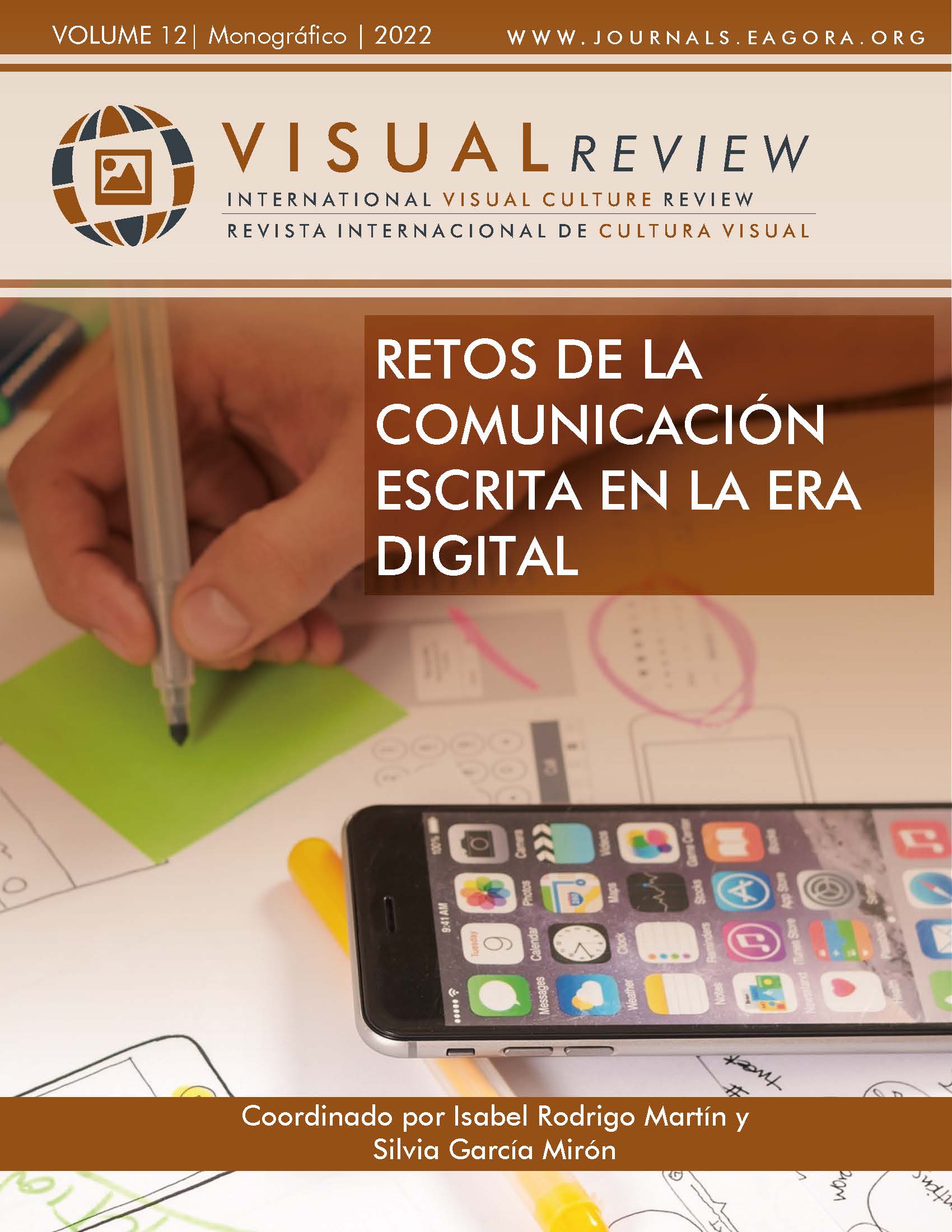The island as a paradise and the touristic impact in the Balearic Islands
A study through the novelized chronicle Balearia and the videogame Alba: A Wildlife Adventure
DOI:
https://doi.org/10.37467/revvisual.v9.3728Keywords:
Videogames, Literature, Balearic Islands, Island studies, Nuria Barrios, Paradise, Audio-visualAbstract
The myth of the island as paradise is one of the most researched topics in the field of island studies, a myth widely exploited by the tourism sector. This article studies two artistic productions about the Balearic Islands, the chronicle Balearia and the videogame Alba: A Wildlife Adventure, with the purpose of observing the social and ecological impact of the massive arrival of tourists to the Balearic archipelago, such as the increase in prices or the destruction of the ecosystem through uncontrolled urbanization.
Downloads
Global Statistics ℹ️
|
434
Views
|
404
Downloads
|
|
838
Total
|
|
References
Aguiló, E., Barros, V., García, M. A., & Rosselló, J. (2007): Actitud de los residentes frente al turismo. Análisis para las Islas Baleares. Bancaja.Alba: A Wildlife Adventure (2020). (Versión para computadora). [Videojuego]. Ustwo Games.Baldacchino, G. (2008). Studying Islands: On Whose Terms? Some Epistemological and Methodological Challenges to the Pursuit of Island Studies. Island Studies Journal, 3(1), 37-56. https://cutt.ly/0KECuuiBarrios, N. (2000). Balearia. Debolsillo.Cantano, A., & Martín, R. G. (2022). Narrativas videolúdicas y sociedad digital: la problemática contemporánea en formato píxel. Obra digital, (22), 10-13. https://doi.org/10.25029/od.2022.351.22 Cardona, J. R. (2012). Actitudes de los residentes hacia el turismo en destinos turísticos consolidados: el caso de Ibiza. [Tesis Doctoral] Universitat de les Illes Balears. https://cutt.ly/JKECOpgCardona, J. R., Azpelicueta Criado, M. D., & Serra Cantallops, A. (2015). El mito del paraíso perdido en la definición del destino turístico. Estudios y perspectivas en turismo, 24(3), 715-735. http://hdl.handle.net/11201/148693
Díaz, R., Gutiérrez, D., & Garau, J. B. (2007). Actitud del Residente en Destinos Turísticos Insulares: Un Análisis Comparativo. XIX Encuentro de Profesores Universitarios de Marketing.
Donovan, S. (2016). Congo Utopia. English Studies in Africa, 59(1), 63-75. DOI: https://doi.org/10.1080/00138398.2016.1173279
Fernández, J. A. (2009). Los debates sobre la percepción social del turismo en las Islas Baleares. Nimbus: Revista de climatología, meteorología y paisaje, (23), 5-24. http://repositorio.ual.es/bitstream/handle/10835/1529/Amer%20Debates.pdf?sequence=1
Gillis, J. (2003). Taking history offshore: Atlantic islands in European minds, 1400-1800. En R. Edmong & V. Smith (Eds.), Islands in history and representation (pp. 19-31). Routledge. DOI: https://doi.org/10.4324/9781003060260-2
Gillis, J. (2004). Islands of the mind: How the human imagination created the Atlantic world. Palgrave Macmillan.
Grove, R. H. (1996). Green imperialism: colonial expansion, tropical island Edens and the origins of environmentalism 1600-1860. Cambridge University Press.
Gutiérrez, D., & Díaz, R. (2006). Actitud del Residente en un Destino Complejo y Diverso: Inestabilidad o Consistencia. XVIII Encuentro de Profesores Universitarios de Marketing.
Lehner, A. (2017). Videogames as Cultural Ecology: Flower and Shadow of the Colossus//Videojuegos como ecología cultural: Flower y Shadow of the Colossus. Ecozon@: European Journal of Literature, Culture and Environment, 8(2), 56-71. https://doi:10.37536/ECOZONA.2017.8.2.1349 DOI: https://doi.org/10.37536/ECOZONA.2017.8.2.1349
Martínez, F. R. (1994). El impacto ambiental del turismo. Desarrollo regional y crisis del turismo en Andalucía: Actas del simposio hispano-francés: Almería 25-29 de junio, 1991 (pp. 331-338). Instituto de Estudios Almerienses.
Murray, I., Rullan, O., & Blázquez, M. (2005). Las huellas territoriales de deterioro ecológico. El trasfondo oculto de la explosión turística en Baleares. Scripta Nova: revista electrónica de geografía y ciencias sociales, 9(199), 181-204. https://bit.ly/3u0Bunk
Nieves, R. H. (2004). La imagen social del impacto del turismo sobre el medio ambiente. Turismo, ocio y deporte. Transformaciones globales: confianza y riesgo, grupo: VIII Congreso Español de Sociología. Alicante, del 23 al 25 de septiembre (pp. 287-298). Universidade da Coruña.
Paravisini-Gebert, L. (2011). Deforestation and the yearning for lost landscapes in Caribbean literatures. En E. DeLoughrey & G. B. Handley (Eds.), Postcolonial Ecologies: Literatures of the Environment (pp. 99-116). Oxford University Press. DOI: https://doi.org/10.1093/acprof:osobl/9780195394429.003.0005
Parham, J. (2016). Green Media and Popular Culture: An Introduction. Palgrave Macmillan. DOI: https://doi.org/10.1007/978-1-137-00948-7
Salom, M. B., & Mas, I. M. (2010). Una geohistoria de la turistización de las islas Baleares. El periplo sustentable, (18), 69-118. https://www.redalyc.org/pdf/1934/193414423003.pdf
Salom, M. B., Bonet, A. A., & Cadena, I. Y. (2015). Crisis y planificación territorial turística neoliberal en las Islas Baleares. Investigaciones Turísticas, (9), 24-49. https://doi:10.14198/INTURI2015.9.02 DOI: https://doi.org/10.14198/INTURI2015.9.02
Sheller, M. (2003). Consuming the Caribbean: from Arawaks to zombies. Routledge. DOI: https://doi.org/10.4324/9780203417942
Statista Research Department (2nd may 2022). El turismo en las islas baleares – datos estadísticos. https://es.statista.com/temas/4146/el-turismo-en-las-islas-baleares/#topicHeader__wrapper
Vieira, F. (2010). The concept of utopia. En G. Claeys (Ed.), The Cambridge companion to utopian literature (pp. 3-27). Cambridge University Press. DOI: https://doi.org/10.1017/CCOL9780521886659.001
Downloads
Published
How to Cite
Issue
Section
License
Those authors who publish in this journal accept the following terms:
-
Authors retain copyright.
-
Authors transfer to the journal the right of first publication. The journal also owns the publishing rights.
-
All published contents are governed by an Attribution-NoDerivatives 4.0 International License.
Access the informative version and legal text of the license. By virtue of this, third parties are allowed to use what is published as long as they mention the authorship of the work and the first publication in this journal. If you transform the material, you may not distribute the modified work. -
Authors may make other independent and additional contractual arrangements for non-exclusive distribution of the version of the article published in this journal (e.g., inclusion in an institutional repository or publication in a book) as long as they clearly indicate that the work was first published in this journal.
- Authors are allowed and recommended to publish their work on the Internet (for example on institutional and personal websites), following the publication of, and referencing the journal, as this could lead to constructive exchanges and a more extensive and quick circulation of published works (see The Effect of Open Access).













